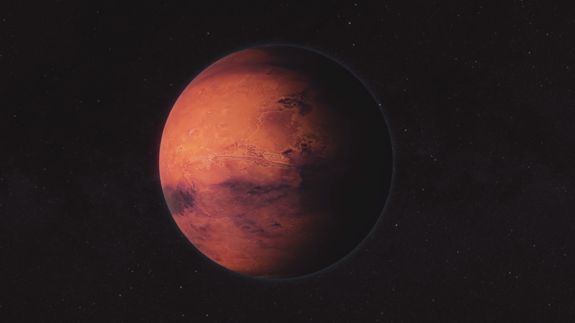Elon Musk's SpaceX wants to take you to Mars starting in 2024

Elon Musk, the charismatic CEO of SpaceX, unveiled the private spaceflight company's ambitious plans for getting humans to Mars and beyond on Monday.
While Musk has discussed settling Mars for years, his speech today at the International Astronautical Congress (IAC) in Guadalajara, Mexico provided more details than ever before about his company's technical plans to get people to the red planet.
Musk envisions a world in which people could pay about $200,000 for a ticket to ride on a spaceship that would deliver them to their new homes on Mars in about 90 days under good conditions. In total, Musk expects that we would need about 1 million people to go to Mars in order to create a self-sustaining settlement on the red planet.
SEE ALSO: Elon Musk is about to reveal SpaceX's big plan for settling Mars: Watch it live
For Musk, this goal is very personal.
"The main reason I’m personally accumulating assets is in order to fund this," Musk said. "So, I really don’t have any other motivation for personally accumulating assets except to be able to make the biggest contribution I can to making life multi-planetary."
He also envisions funding for these missions as a public/private partnership, with multiple companies and public entities working together to make SpaceX's Mars dream a reality.
A slick new video released by SpaceX gives viewers a real glimpse of exactly what the technology needed to get to Mars will look like.
Massive rocket and array of sci-fi technologies
The company plans to use a huge rocket to launch Mars-bound spaceships filled with at least 100 people to orbit before landing the booster back on Earth and prepping it to launch again with very little turnaround time.
The rocket, once built would likely be the most powerful ever, producing 28.73 million pounds of thrust, far more than the Saturn V, the most powerful rocket flown to date.
The second launch would deliver a refueling ship to orbit, where it would fuel the Mars-bound human-carrying craft. Once fueled, the crewed ship will depart on its way to the red planet.
12m rocket booster diameter, 17m spaceship diameter, 122 m stack height
— Elon Musk (@elonmusk) September 27, 2016
As for the trip itself, Musk says it'll be a good time.
"It’ll be really fun to go," Musk said during the speech. "You’ll have a great time."
He's also thinking about naming the first ship "Heart of Gold," a reference to Hitchhiker's Guide to the Galaxy.
But that doesn't mean it won't be dangerous. Musk said that people should be in the running to travel to Mars if they're "prepared to die."
“The first journey to Mars would be really, really dangerous," Musk said.
The company's goals are exceedingly lofty, especially given the fact that SpaceX has yet to fly people to space at all. However, that could change soon. The company does have plans to begin launch astronauts to the International Space Station for NASA in the next two years.
SpaceX also recently experienced a major setback when one of its Falcon 9 rockets exploded just before an engine test, destroying its communications satellite payload.
We'll start a cadence of sending Dragons to Mars in two years. Will be like a train leaving the station pic.twitter.com/Jpjwn3hWax
— SpaceX (@SpaceX) September 27, 2016
In the immediate future, SpaceX plans to sent an uncrewed spacecraft to Mars by 2018 and other ships every two years after that.
The last few seconds of the SpaceX video seem to hint at the idea that Musk dreams of actually making Mars livable, by somehow engineering seas and continents onto the cold, dry and desolate planet.
SpaceX's plan is like a greatest-hits compilation of all the great science fiction ideas that Musk hopes to dream into reality. From terraforming to reusable rockets and in-space refueling, SpaceX's vision of the future of rocketry looks a lot like that of the visionaries that came before him.
And we will need many of those things in order to settle on the red planet.
According to Musk, the company will need to develop a system that's fully reusable, which means that rocket boosters and spaceships should be recycled after each use and launched again, and fuel ships in orbit.
SpaceX will also need to find the right kind of propellant to get to the planet and actually produce more fuel on the red world itself.
Musk's career as a spaceflight entrepreneur has, in many ways, been leading to this announcement. The unveiling of his technical plan is a big step on the way toward making his vision of the future clear to the rest of the spaceflight community.
"I think this is the kind of thing that appeals to anybody with an exploratory spirit," Musk said, adding that he hopes his speech will help inspire the international community to also work toward the goal of sending humans to Mars.
